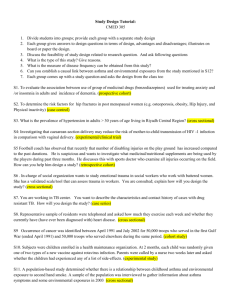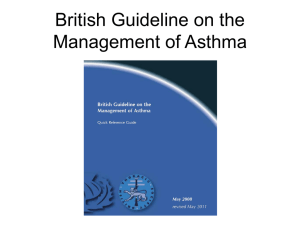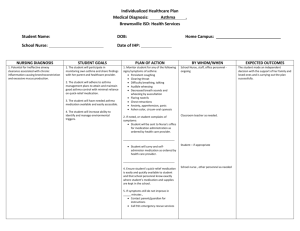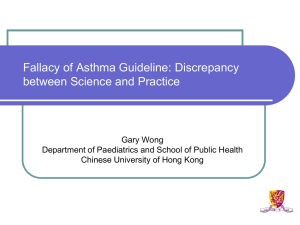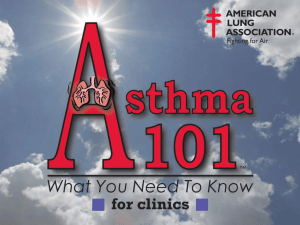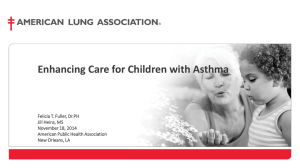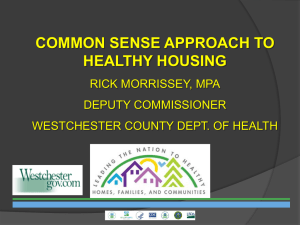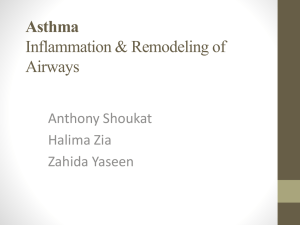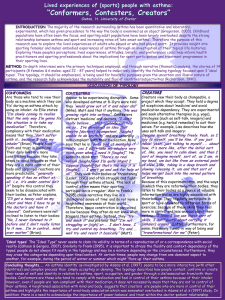Asthma Knowledge and Skills Tests
advertisement
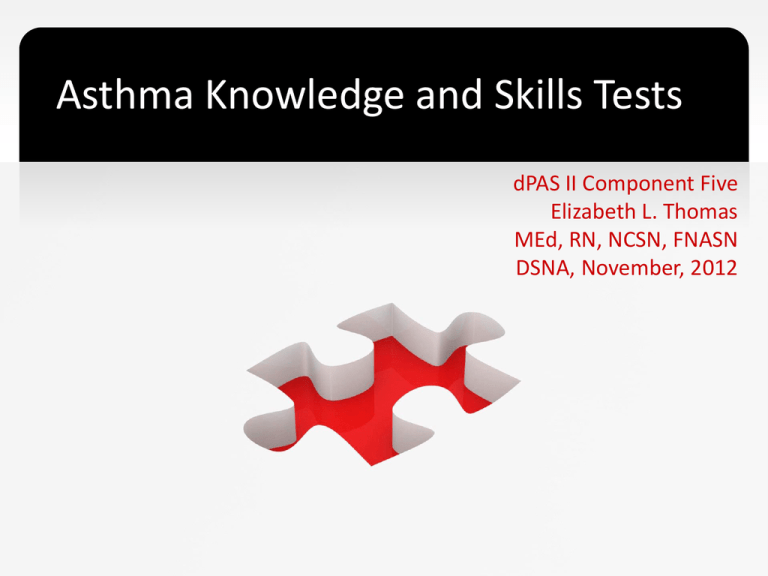
Asthma Knowledge and Skills Tests dPAS II Component Five Elizabeth L. Thomas MEd, RN, NCSN, FNASN DSNA, November, 2012 What are we doing? • Selecting the condition of asthma as a focus for health promotion • Measuring knowledge and skills with the notion that healthy students are better learners • Using a written test with skills demonstration followed by health education to improve student knowledge and skills WHY? A GOAL of improved health (and a higher score on the post test) ` Four Pre Tests and Four Post Tests K-2 3-5 6-8 High school School Nurse may choose to administer a different level test to students based on developmental age ` • • • • • • Total of 100 possible points//10 MC for 3 points and 10 skills for 7 points Choosing a cohort • Maybe all students in a grade with HCP documented asthma? • Maybe all students in a grade who have RX meds in school for asthma? • Maybe all students in whole school with above? • Maybe only students who have multiple visits for asthma symptoms in previous month? • School Nurse Decision-But must be cohort of 10150 students ` Giving the Pre Test 1. 2. 3. 3. Schedule the pretest with the teacher CONSISTENCY is key Assure appropriate level for student Ten multiple choice questions may be administered by another staff member prn. 4. Questions may be read to student. 5. Item Tag and codes will be useful for research 6. Demo of skills should closely follow MC ` Skills Demonstration Must be assessed by School Nurse using rubric provided 7 possible points for each skill ` Must be done 1:1 as soon as possible after the written test Remember to be consistent!!! Knowing the codes Item tag found after each test item: Example is 0001.AS.3-5.Pre.MC-LV2-TP LV1, LV2, LV3 indicate depth of knowledge Last letter indicates area of knowledge and skill set D=definition or description P=pathophysiology M=Medications S=Symptoms TP=Treatment Plan Q=Equipment HS=Health Status ` Health Education Intervention • Suggest that parents be notified of student learning opportunity around chronic condition • Must last at least four weeks • Must be consistent for whole cohort • May include parent information packets • Use your skills, ingenuity and creativity ` • SN: Scope and Standards (2011) Standard 5b Resources for educational plan • • • • • • www.aaaai.org www.kidshealth.org www.lunginfo.org www.nlm.nih.gov/medlineplus/asthma.html www.cdc.gov www.epa.gov/asthma/pdfs/asthma_fact_sheet_ en.pdf • http://niaid.nih.gov/topics/asthma • http://nhlbi.nih.gov ` Post Test • MC may be given as a group if convenient • MC may be monitored by another staff member • Skills development must be assessed by SN • Expectations appropriate to age/developmental age ` Scoring the Tests • Ten MC worth three points each= 30 points • Ten Skills Demos worth seven points each=70 points • Potential score = 100 points ` Calculating the Score # Students showing improvement ________________________________ = Total # of Students in Cohort ` % of cohort growth (improvement) Acceptable Growth 50% is acceptable student growth-Need ½ of cohort to improve Example: 8 students show improved score = 80% 10 students in cohort ` Remember—if pre test and post test are 100%, maintaining 100% is considered improvement! Evaluating the Test Results Compare the pre and post tests using the codes Determine if knowledge questions or skills demos are problematic Revise education plan as appropriate Try again! ` Looking Forward Research possibilities compare cohort to control group compare absences due to asthma pre/post intervention compare GPA pre/post etc ` Bank of Learning Opportunities Test bank Thank You Libbythomas@msn.com 302-764-3759 `
